Hand Tools
Below are descriptions, in alphabetical order, of the hand tools used in the treatments and enclosures included in this manual.
Angles
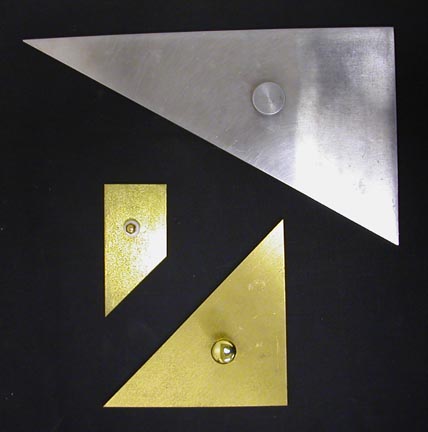
These brass and stainless steel angles serve as handy templates for marking and cutting at either 90 degrees or at other predetermined angles. The acute angles of the ones shown are 45 and 60 degrees.
Awls
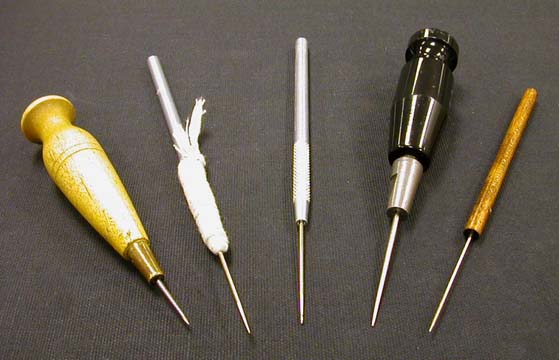
These tools are used preparatory to sewing, to pierce holes for the needle to go through. Functionally, the awl and probe are the same.
Backing Hammer
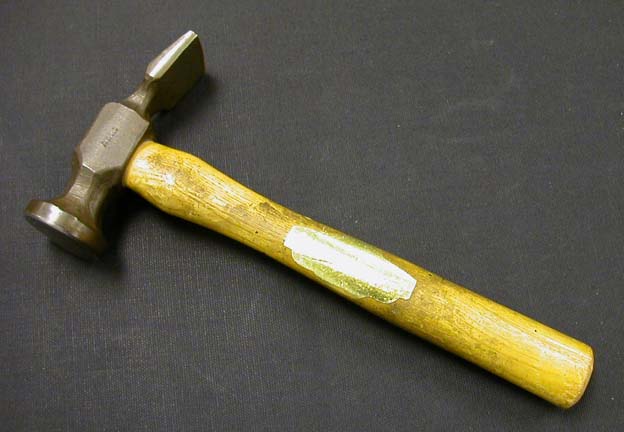
While actually a tool intended for backing books at the time they are made, the backing hammer is also useful for shaping and otherwise manipulating the spines of disbound text blocks belonging to books undergoing higher-level treatments.
Bench Brush
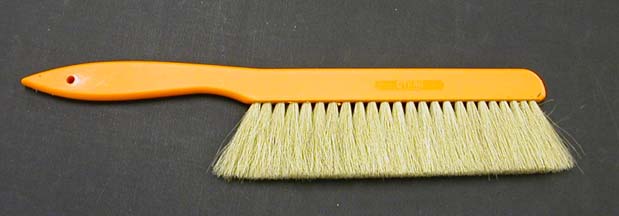
A typical bench brush is a good item to keep handy in the lab, to sweep up the mess often made by performing circulating collections conservation work.
Bone Folder
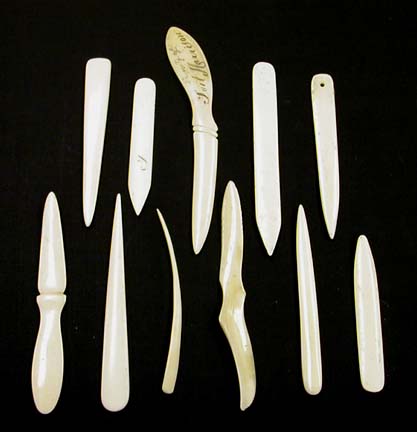
These variously-shaped pieces of bone are used for smoothing, scoring, and creasing paper and cloth, and working materials into tight corners. The bone folder is polished to a smooth finish to avoid damaging the materials it is used to manipulate, but with sufficient (or excessive) pressure its edge is sharp enough to cut paper or cloth. This cutting function of the tool can be either handy and deliberate or unfortunate and accidental, so one needs to be careful in avoiding the latter. It is best to keep the bone folder clean and free of glue so it slides and burnishes nicely. Two of the folders shown are commercially available ones; the rest of them were made by us from elk and deer bone.
Chisel
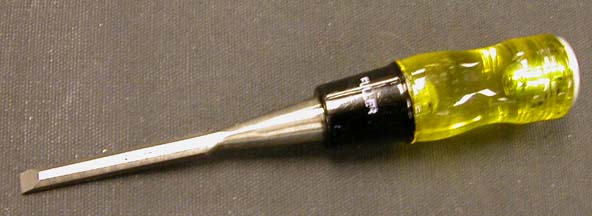
A well sharpened ordinary chisel can be used to remove plastic adhesives from book spines. The chisel is also used for routing trenches in binder’s board. One purpose of this is to make flush the tying tapes of certain portfolio-type enclosures. Another is for creating a recess in the front board of a new case, into which is inlaid a title- or illustration-bearing section of original cover material, after covering.
Dry Cleaning Sponge
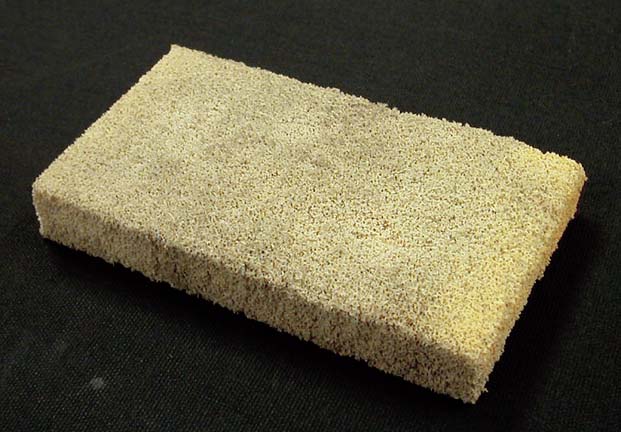
Dry cleaning sponges, also known soot sponges, are used to clean particulate surface dirt (not embedded stains) from dry surfaces such as paper, leather, walls, paintings, etc. Made of vulcanized rubber.
Glue Brushes
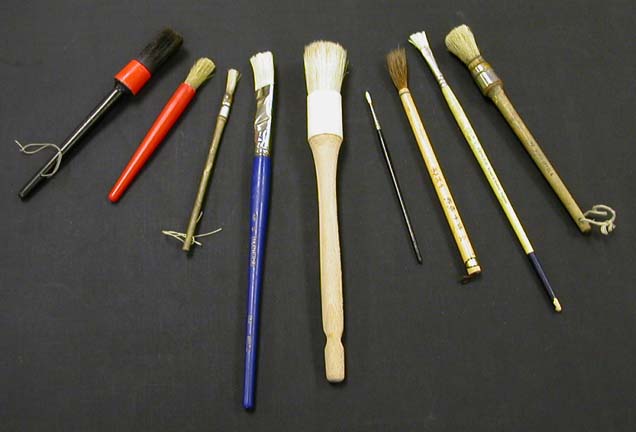
The medium-size cylindrical brushes are the best choice for general work, as their holding capacity and distribution qualities are both good. The larger cylindrical brushes (e.g., the black and red one) are occasionally used for work of more expansive area, and the largest cylindrical brush in the center is a paste brush. It is reserved for applying wheat paste to large surfaces. The small flat brushes are ideal for tipping pages, paper mending, and getting into tight corners where the larger brushes either can’t reach or would make a mess. It is imperative that glue brushes be washed out thoroughly with warm water and mild soap, such as Ivory Soap, after every use. The brush is rubbed against the bar of soap, them the soap is worked in with the brush tip against the palm of your hand, then rinsed thoroughly with water.
Hammer and Punch
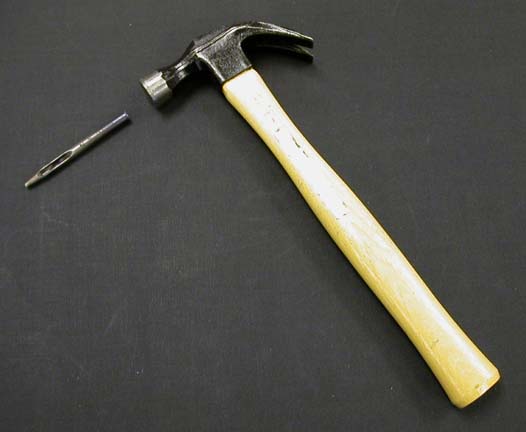
This combination of tools is used for making the holes for the rivets in phase boxes. The hammer is an ordinary claw hammer. The punch is a “No. 2 hollow punch” and is tapered to a diameter of 1/8″ at the tip.
Heated Microspatula
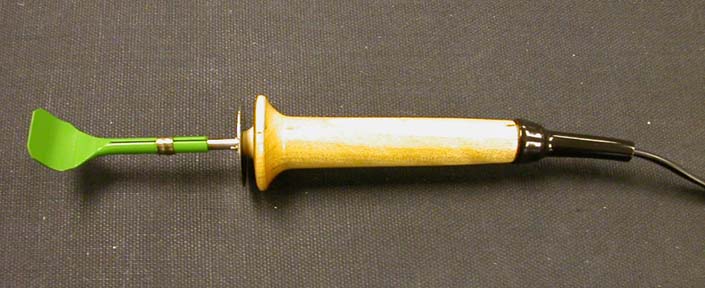
The tip of this tool is heated by means of an electric element. It is used primarily for tape removal and for cleaning the plastic adhesive from the spines of books. It has a rheostat for controlling temperature and a variety of differently-shaped tips.
Knives and Sharpening Tools
Utility Knife
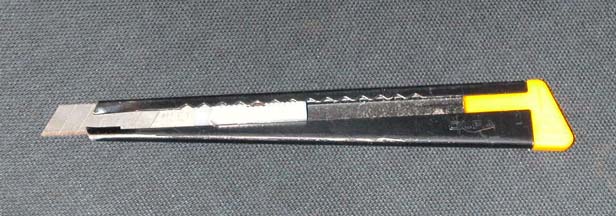
This Olfa utility knife is used for most cutting and trimming done with a knife during repairs. These knives have snap-off blades so you can get a fresh cutting edge quickly when you need it.
Oyster Knife
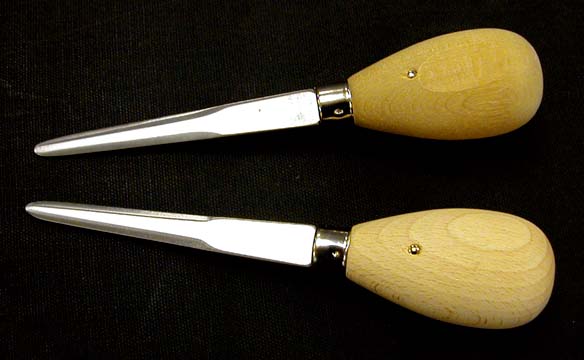
A rounded, polished steel blade in a pear-shaped wooden handle, this is an excellent tool for removing staples without damaging the paper. Simply pry up both hooks of the staple and then pull it out from the other side.
Scalpel

The scalpel differs from the Olfa knife in that its blade comes to a more acute point than that of the Olfa. Also, the blades are disposable and are simply replaced in their entirety when dull. The scalpel is the cutting tool of choice when cutting tight curves in paper or cloth. Scalpel blades come in different profiles.
Sharpening Stones
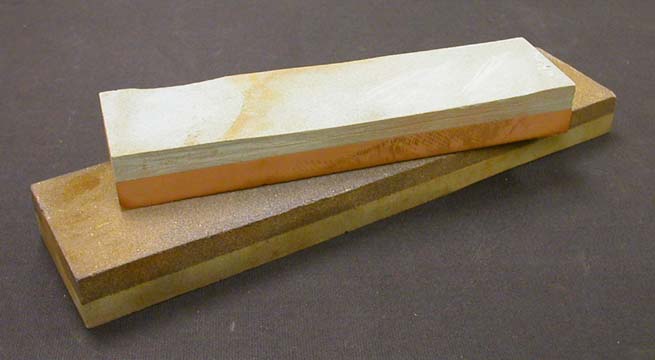
Sharpening stones must be used with a fluid, either water or oil, depending on whether an oil stone or a water stone is being used. Otherwise, waste metal particles pack up on the surface of the stone, blocking its abrasive action. The oil or water keeps these particles in solution so the stones’ abrasive surfaces remain accessible. The ones we use are water stones. The two sides of both are of different grits. The coarsest of these removes metal very speedily; the finest leaves an edge that needs very little further dressing before use.
Strop
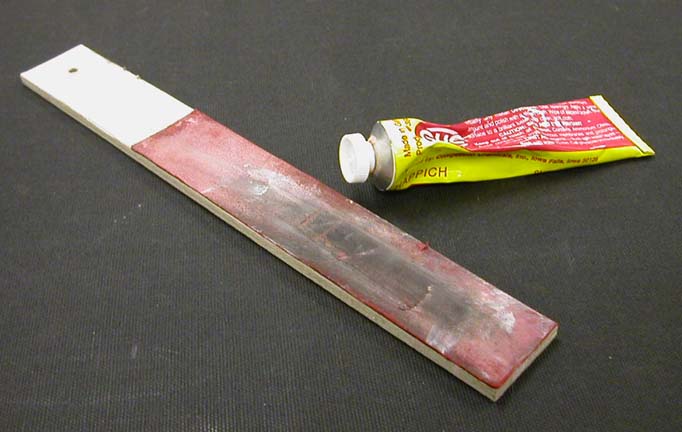
This doesn’t have to be anything fancy; this strop was made by gluing a piece of leather to a double-thickness piece of binders board, and it works fine. It is charged with metal polish, and following final whetting with the sharpening stones it removes the last of the burrs and wire edge and brings the surfaces of the bevel and back side of the blade to a mirror-polish.
Microspatula
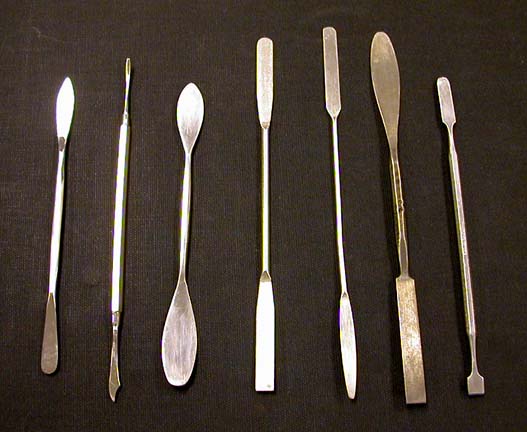
These small metal spatulas are used for a number of functions. They are excellent for scraping, applying methyl cellulose to a book spine to remove the old adhesive, delaminating the layers of board, and lifting delicate materials and helping them back into place, during the performance of repair treatments. They are made of stainless or tool steel and are available in a wide variety of shapes and sizes.
Needles
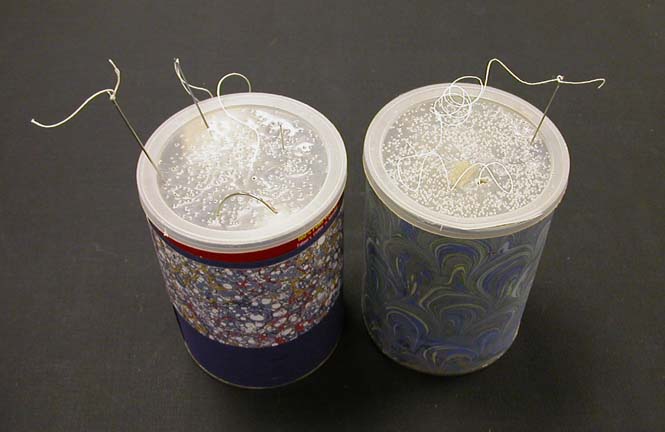
We generally use ordinary straight needles for routine sewing, such as binding stitched pamphlets and attaching end sheets. Occasionally there is a project for which a curved needle is the better tool for the job. Small-size coffee cans serve well as holders for both needles and thread, as shown.
Rulers
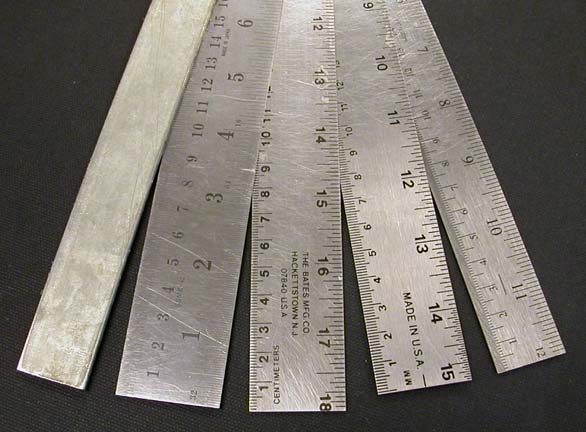
We mainly use the metric system of measure. Metric rulers are a bit more precise than rulers marked off in inches, as the units of measure (millimeters) are slightly smaller than those of our conventional Western rulers (most commonly sixteenths of inches). But the main advantage lies in the fact that the metric system of measure is in base 10, rather than the base 12 of inches. With a little experience, the metric measuring system becomes quite easy and handy to use.
The terms “ruler” and “straight edge” simply refer to whether or not (respectively) the tool is marked for measuring. So, the image shows a straight edge on the far left; the rest are rulers.
The straight edge on the far left and the ruler on the far right are both 1 inch (2.5 cm) wide. As you will see throughout the manual, these get used a lot for trimming cloth to a 1″ turn-in.
Scissors
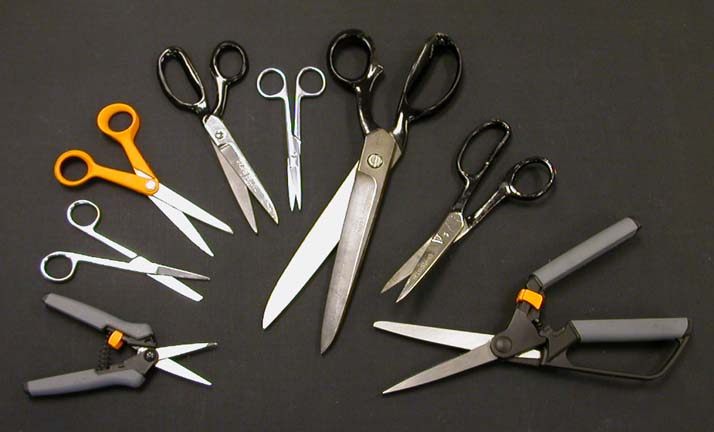
Other than the normal household variety, we use angled scissors, which are good for flush cutting, and Fiskars scissors, which are void of the usual loop ends for the finger and thumb and can be locked in the closed position.
Tacking Iron
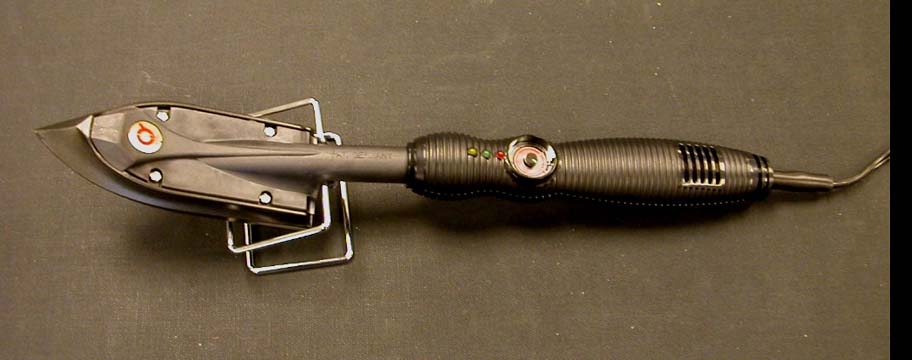
This tool can be used for mending with heat-activated adhesives and is sometimes used to speed up the drying of Japanese tissue and paste mends.
Tweezers
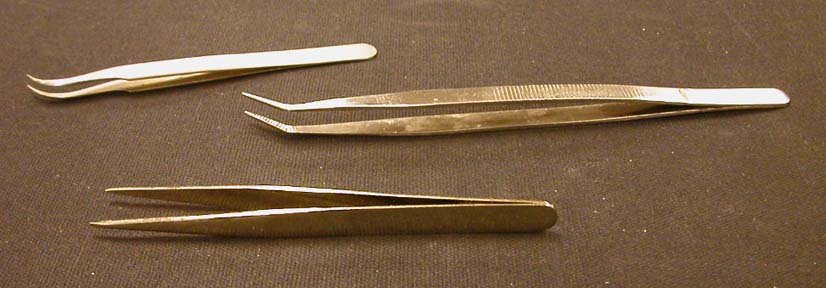
Though a variety of tweezers is handy for general use, the one specific function of our lab that consistently employs them is the tying of the knot in the closures of phase boxes. They are also used to pick up a pasted-out piece of Japanese tissue.
Weights
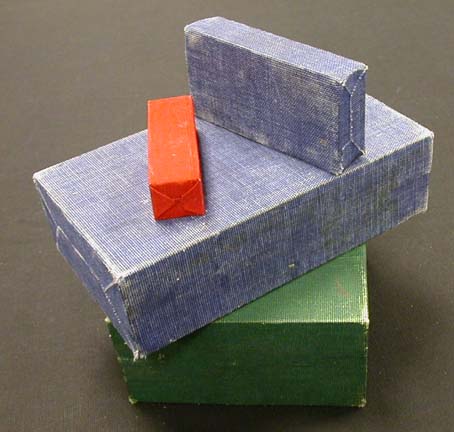
We use cloth-covered steel bricks and shot-filled weights to apply even pressure to Japanese tissue mends, to flatten documents, and help certain book repairs dry flat.
